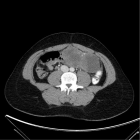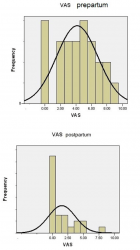About Amirkabir University of Technology
Amirkabir University of Technology
Articles by Amirkabir University of Technology
C3D data based on 2-dimensional images from video camera
Published on: 13th January, 2021
OCLC Number/Unique Identifier: 8899341920
The Human three-dimensional (3D) musculoskeletal model is based on motion analysis methods and can be obtained by particular motion capture systems that export 3D data with coordinate 3D (C3D) format. Unique cameras and specific software are essential for analyzing the data. This equipment is quite expensive, and using them is time-consuming. This research intends to use ordinary video cameras and open source systems to get 3D data and create a C3D format due to these problems. By capturing movements with two video cameras, marker coordination is obtainable using Skill-Spector. To create C3D data from 3D coordinates of the body points, MATLAB functions were used. The subject was captured simultaneously with both the Cortex system and two video cameras during each validation test. The mean correlation coefficient of datasets is 0.7. This method can be used as an alternative method for motion analysis due to a more detailed comparison. The C3D data collection, which we presented in this research, is more accessible and cost-efficient than other systems. In this method, only two cameras have been used.
Assessment and sensitive analysis of biological water risks in water resources with application of classical mass transfer computations
Published on: 9th June, 2021
OCLC Number/Unique Identifier: 9124650394
Due to the urgent need for water in all parts of industrial or developing societies, water supply, and transmission facilities are suitable targets for biological risks. Given that even a short interruption in water supply and water supply operations has a great impact on daily activities in the community, the deliberate contamination of urban water resources has irreparable consequences in the field of public health, and the economy of society will follow. Unfortunately, most officials in the public health control departments in our country have received limited training in detecting accidental or intentional contamination of water resources and dealing with the spread of waterborne diseases both naturally and intentionally. For this reason, there is low preparedness in the responsible agencies to deal with waterborne diseases during biological risks. In the first step of this research, a review study has been conducted on water biological risks and operational strategies to deal with them. In the following, it has studied how Escherichia coli (E. coli) bacteria spread in aqueous media. In this regard, the kinetic model of the studied microorganism was analyzed based on the implementation of (Fick Law) in polar coordinates and the combination of (Dirac Distribution) with (Legendre polynomial) distribution. Finally, after studying the factors affecting the microbial pollutant emission coefficient, the effects of all three factors of linear velocity, linear motion time period, and angle of motion on the pollutant emission flux and biofilm diffusion time in the water supply network environment were investigated. Studies have shown that the linear velocity parameter of Escherichia coli with a nonlinear relationship has the greatest effects on the release of microbial contaminants.
Simulating the dispersion of poisonous organic chemical compounds in wastewater treatment process through the active sludge method using the TOXChem model
Published on: 24th June, 2021
OCLC Number/Unique Identifier: 9124851637
Naturally, microorganisms decompose the organic material existing in nature, both in the presence or absence of oxygen. The majority of materials such as poisonous chemical compounds, heavy metals, would prevent the treatment process from taking place, lead to the entry of these contaminants into the environment results in the emergence of numerous diseases. In the present study, using the TOXChem4.1 simulation model, attempts were made to simulate a wastewater treatment plant and then assess the dispersions of contaminants including 1,2-Dimethylnaphthalene, 1,3-Dinitropyrene, 1,6-Dimethylnaphthalene, 1,6-Dinitropyrene, and 17a-ethinylestradiol (EE2) in concentrations of a common scenario. The results of computer simulations showed that the EE2 contaminant is of the highest percentage of decomposition among others, due to its wider chemical structure. Consequently, it is clear that such contaminant is of the highest mass in the sludge exiting the treatment plant. In addition, the results of the simulations demonstrated that the highest volumes of gaseous pollutants take place in the modulation and initial sedimentation units.
Hydrogel-Based Formulations for Drug Delivery to the Posterior Segment of the Eye
Published on: 12th September, 2023
Hydrogel-based formulations hold significant promise for treating ocular diseases that impact the posterior segment of the eye. These formulations exhibit the ability to surmount ocular barriers and offer sustained drug release, rendering them efficacious drug delivery systems. This article addresses the challenges linked to treating disorders affecting the posterior eye segment and underscores the imperative for less invasive drug delivery methodologies. We further delve into diverse contemporary ocular dosage forms, encompassing gels, nanostructures, and implants, with a specific emphasis on hydrogels. Hydrogels offer several merits, including precise targeting, sustained release, enhanced bioavailability, and non-invasiveness. Moreover, they curtail the risk of adverse effects and foster patient adherence. An enthralling advancement is the amalgamation of hybrid drug delivery systems, integrating nanoparticles, liposomes, dendrimers, and stimuli-activated nano-systems, with hydrogels for posterior eye ailment treatment. These hybrid nano-systems exhibit promise in enhancing drug stability, prolonging drug release, and pinpointing specific tissues within the posterior segment. We also provide an overview of ongoing clinical trials and approved hydrogel-based drug delivery systems, like Retisert and Ozurdex. These systems have demonstrated efficacy in managing chronic non-infectious uveitis, Age-related Macular Degeneration (AMD), and diabetic macular edema. Nevertheless, challenges persist, including optimizing bioavailability, maintaining drug stability, and implementing personalized treatment approaches. The incessant evolution of gel-based drug delivery systems stands to substantially enhance patients’ quality of life and establish new benchmarks in treating posterior eye diseases. The future of ophthalmology brims with excitement, as gel-based drug delivery systems hold the potential to revolutionize ocular therapies, providing effective remedies for an array of vision-related afflictions.
Evaluation of In vitro and Ex vivo Models for Studying the Effectiveness of Vaginal Drug Systems in Controlling Microbe Infections: A Systematic Review
Published on: 28th November, 2023
The survey gives an in-depth examination of medicate assimilation challenges within the genital range and the improvement of vaginal medicate conveyance gadgets to overcome these challenges. It investigates the components involved in medicate discharge within the genital locale and examines commonly utilized vaginal sedate conveyance frameworks such as nanoparticles and hydrogels. The survey centers on the applications of these conveyance frameworks in controlling bacterial vaginal diseases. The plan issues related to vaginal sedate conveyance gadgets are moreover examined, highlighting the significance of considering variables such as mucoadhesion and bodily fluid porousness. The survey portrays different in vitro and ex vivo models utilized for assessing these frameworks, counting organoids and new human cervical bodily fluid. The choice of show depends on the particular objectives and characteristics of the definition. The audit emphasizes the noteworthiness of utilizing these models to pick up important bits of knowledge and make precise forecasts with respect to the execution of medicate conveyance frameworks in vivo. Moreover, grandstands progressed models utilized for other mucosal locales as a potential motivation for future models of the female regenerative framework. Generally, the audit highlights the significance of understanding organic instruments and planning compelling vaginal drug conveyance frameworks to progress sedate conveyance within the genital region. It emphasizes the require for suitable models to evaluate and anticipate the execution of these conveyance frameworks.
A General Evaluation of the Cellular Role in Drug Release: A Clinical Review Study
Published on: 26th March, 2024
Cells have emerged as highly promising vehicles for delivering drugs due to their unique advantages. They have the ability to bypass immune recognition, navigate biological barriers, and reach difficult-to-access tissues through sensing and active movement. Over the past couple of decades, extensive research has been conducted to understand how cell carriers can overcome biological barriers and influence drug effectiveness. This has resulted in the development of engineered cells for targeted drug delivery to specific tissues. Despite the presence of exciting developments, a comprehensive understanding of the challenges and potential strategies is necessary for the effective clinical application of cell-based drug carriers. This review provides an overview of recent progress and novel concepts in cell-based drug carriers, as well as their potential for translation into clinical practice. Additionally, we delve into important factors and emerging strategies for designing the next generation of cell-based delivery technologies, with a particular emphasis on achieving greater accuracy and targeted drug administration.

If you are already a member of our network and need to keep track of any developments regarding a question you have already submitted, click "take me to my Query."

















































































































































